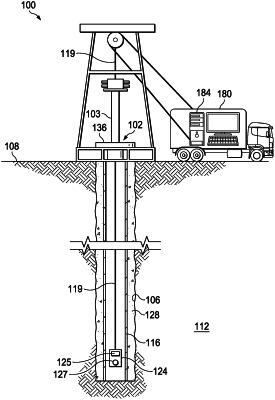| CPC E21B 47/002 (2020.05) [E21B 47/12 (2013.01); G01V 8/02 (2013.01); H04N 7/183 (2013.01); E21B 33/13 (2013.01); E21B 2200/22 (2020.05)] | 17 Claims |

|
1. A method to perform post drilling downhole inspection in real-time, the method comprising:
after completion of a drilling operation and a completion operation, deploying a camera and a logging tool downhole; wherein the logging tool comprises at least one of a caliper, an electromagnetic tool, or an acoustic tool;
obtaining real-time transmissions of images from the camera; wherein the camera captures images of a tubular or casing;
obtaining real-time transmissions of data from the logging tool; wherein the logging tool measures the thickness of a tubular or casing; and
determining, via an artificial intelligence technique, a presence of a downhole anomaly based on the real-time transmissions of images and the real-time transmissions of data of the tubular or casing;
comparing the real-time transmissions of images and the real-time transmissions of data with previous images and data of the tubular or casing; and
providing a prediction of when the downhole anomaly could cause the tubular or casing to fail.
|